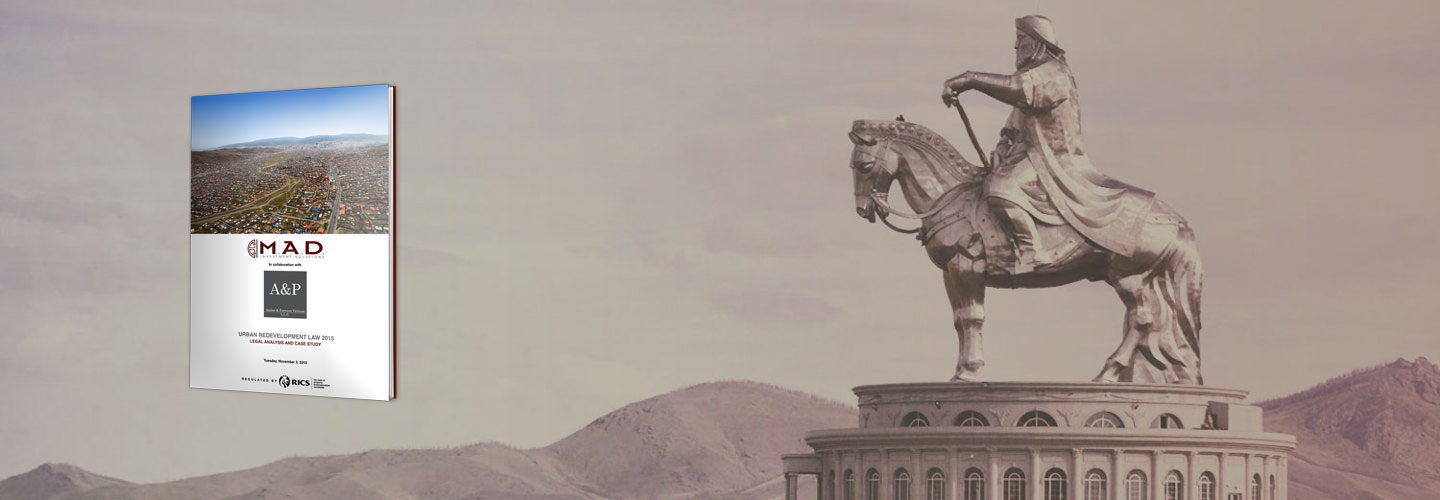M.A.D. and Audier & Partners launch comprehensive analysis of the Urban Redevelopment Law
After much criticism, debate and argument, the new Urban Redevelopment Law has recently been voted on and accepted by the Government of Mongolia. This new law can have far reaching impacts in the urban development in the city, in particular as it sets out the principles by which buildings can be demolished and rebuilt.
Due to the importance of this law in the redevelopment of the ger districts of Ulaanbaatar as well as for the older building stock of the city, M.A.D. Investment Solutions and Audier & Partners have decided to publish a detailed analysis of the law, its strong points and its weaker elements, including the changes that have taken place between the draft law and the version that was approved. This in an effort to better inform the community of stakeholders which are concerned by the future urban development of Ulaanbaatar.
Through a lengthy process of community participation and lobbying, many uncertainties in the draft law have been resolved with some controversial elements removed. Nevertheless, there are still a number of considerable issues with the law as it was passed. Primarily with respect to the exact process of implementing and monitoring the 80% acceptance rate. This links directly to an issue where there remains considerable uncertainty surrounding the enforceability mechanisms that relate to the landowners participation rights and their choice of future developments.
The most basic issue that remains to be resolved for the law to be successfully implemented is the setting up of a transparent, fair and efficient valuation system. This is something which we hope will be improved over the coming few years.
The present analysis goes in-depth in the various controversial articles of the law and presents solutions to how those articles could be improved through amendments and policy solutions.
We hope that stakeholders in the Ulaanbaatar property sector may find this useful. We remain at the disposal of anyone who would like to further discuss this analysis.


